How to make self-raising flour from plain (or all-purpose) flour and baking powder.
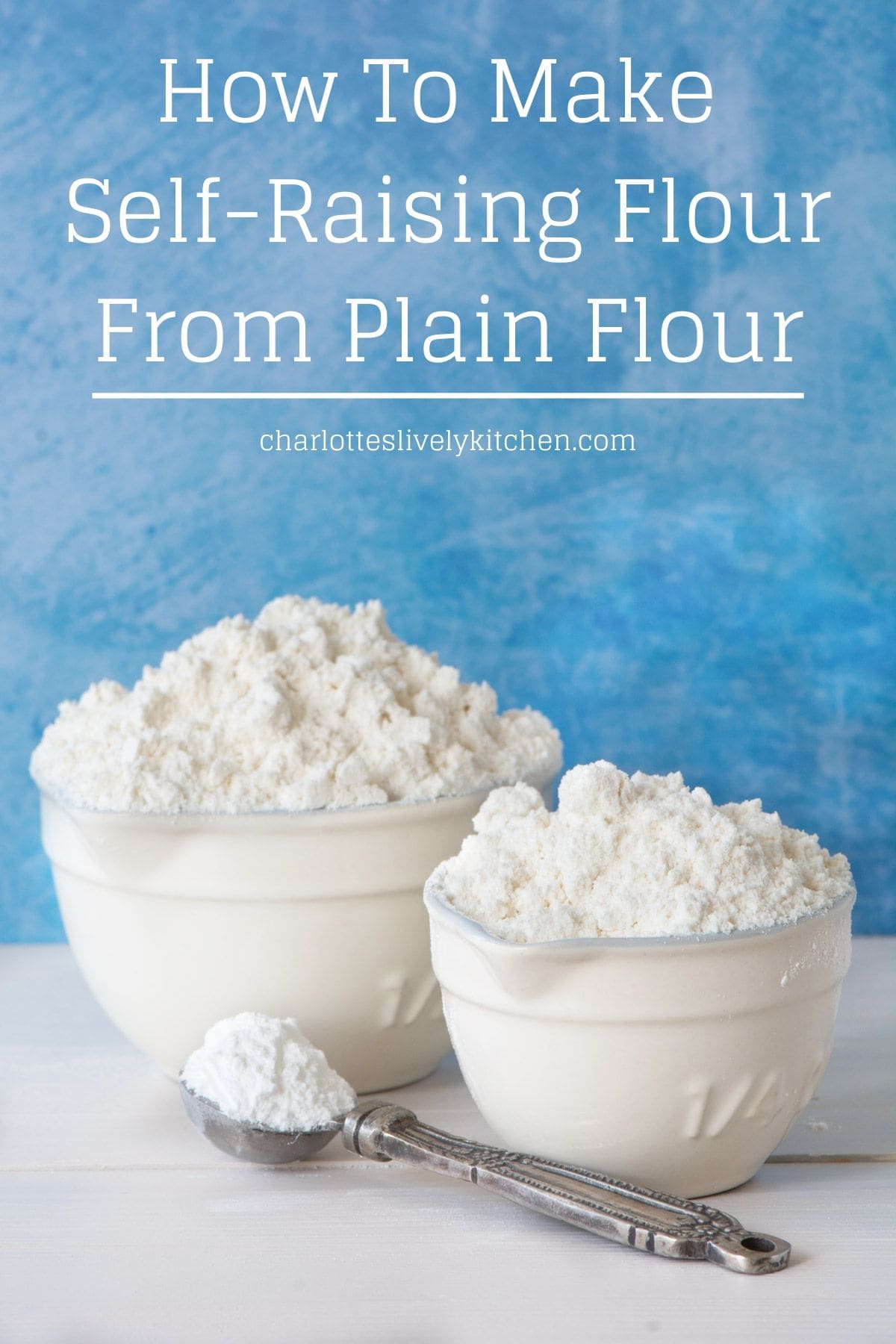
I use self-raising flour in a lot in my recipes and one question I get asked quite regularly is how they can be adapted to be made from plain or all-purpose flour with added baking powder.
There are lots websites and books about which suggest the correct quantity of baking powder to add to plain to turn it into self-raising, but annoyingly they don’t all agree.
Nigella suggests adding ½ tsp of baking powder and ½ tsp of bicarbonate of soda to 150g of plain flour, whereas Baking Mad suggests adding 2 tsp of baking powder to 150g of flour. Then King Arthur Flour proposes adding 1½ tsp of baking powder and ¼ tsp of salt to 120g of flour. As you can see the suggestions aren’t even close!
So how how on earth do we know how much baking powder is needed to make self-raising flour?
My solution (the same as always)… to get into the kitchen and get baking.
The experiment
I decided to make lots of simple vanilla cupcakes, one batch using self-raising flour and then all the others made with plain flour and subtly different amounts of baking powder.
NOTE – The vanilla cupcake recipe I used for these experiments is ever so slightly different from the recipe linked above, as in that recipe I add extra baking powder. For this experiment I decided to leave that out as I felt it gave a cleaner comparison.
The results
As expected, the more baking powder that’s used the greater the rise.

You can see the cupcake made with just plain flour is much shorter than the others. Also, as it baked a lot of the fat bubbled out leaving it dry and dense. If you ever have a cake that doesn’t rise as expected, it would suggest that your baking powder isn’t working properly (or you’ve use bicarbonate of soda instead – something I’ll be writing a post about soon).
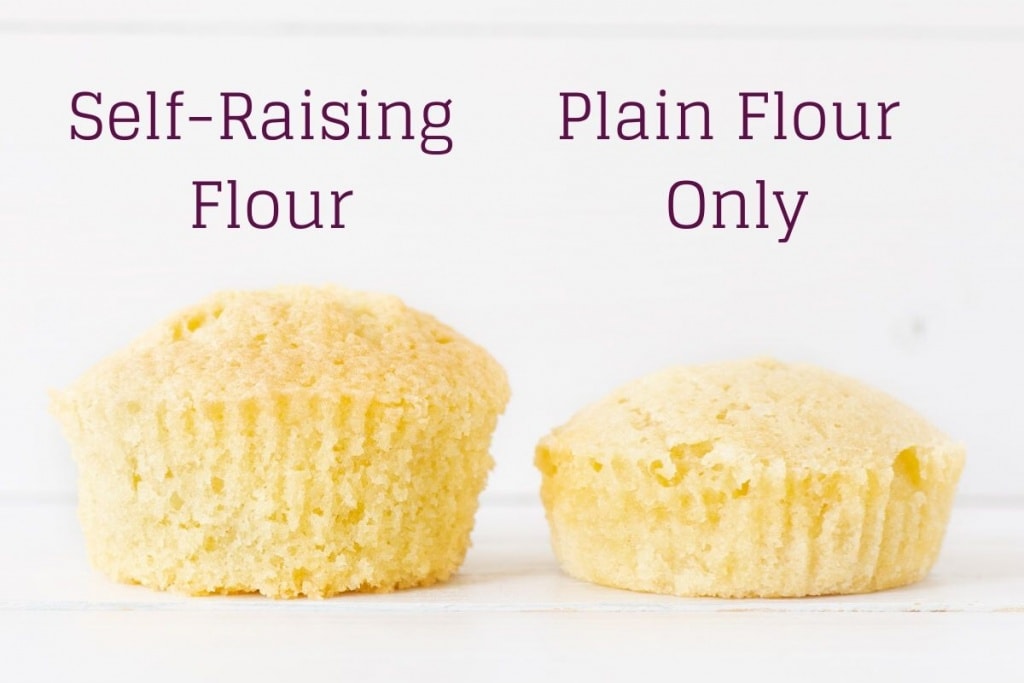
If you want to check your baking powder you can add a little to some boiling water. If it bubbles (the bubbling will be quite furious), you can get baking. If not, it’s time to get to the shops for a fresh packet.
Going to the other end of the scale, when you compare the cupcake made with self-raising flour to the cupcake made with 1 tsp of baking powder per 50g of plain flour, you can see that the plain flour cupcake is taller (especially at the sides) and flatter on top. I like a tall flat cupcake which is why I often add additional baking powder to my recipes when using self-raising flour.
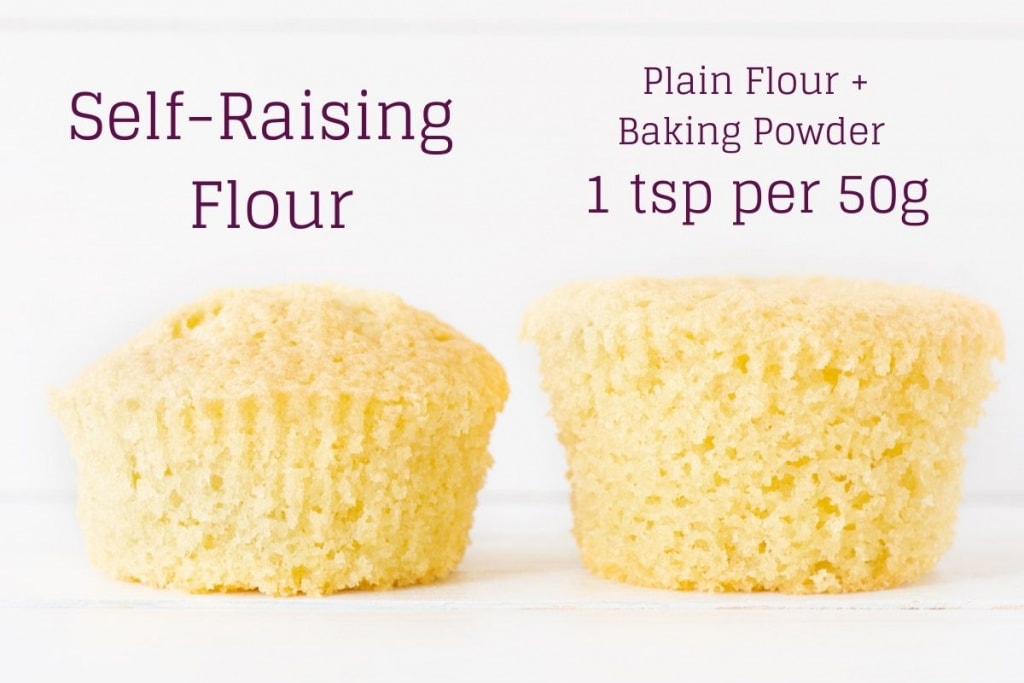
So, much like in goldilocks and the three bears we have one cupcake that’s too small and one cupcake that’s too big and fluffy. All we need now is a cupcake that’s just right…
How much baking powder should be added to plain flour to make self-raising flour?
The answer is 1 tsp of baking powder per 100g of plain flour.
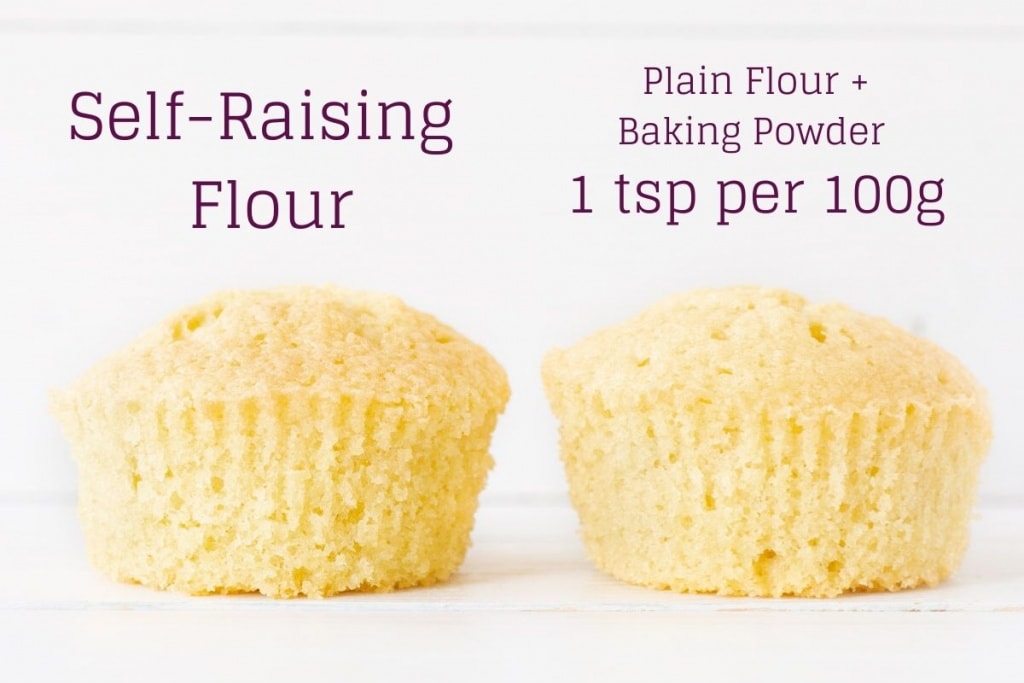
You can see that the cupcakes are not only nearly identical in terms of height, they’ve also got a very similar dome on top.
Is that a heaped teaspoon or a level teaspoon?
Always a level teaspoon (much more accurate as some teaspoons will hold a bigger heap than others depending on their shape).
Also, I always use a measuring teaspoon rather than one I’d use to make a cup of tea as again it’s much more accurate.
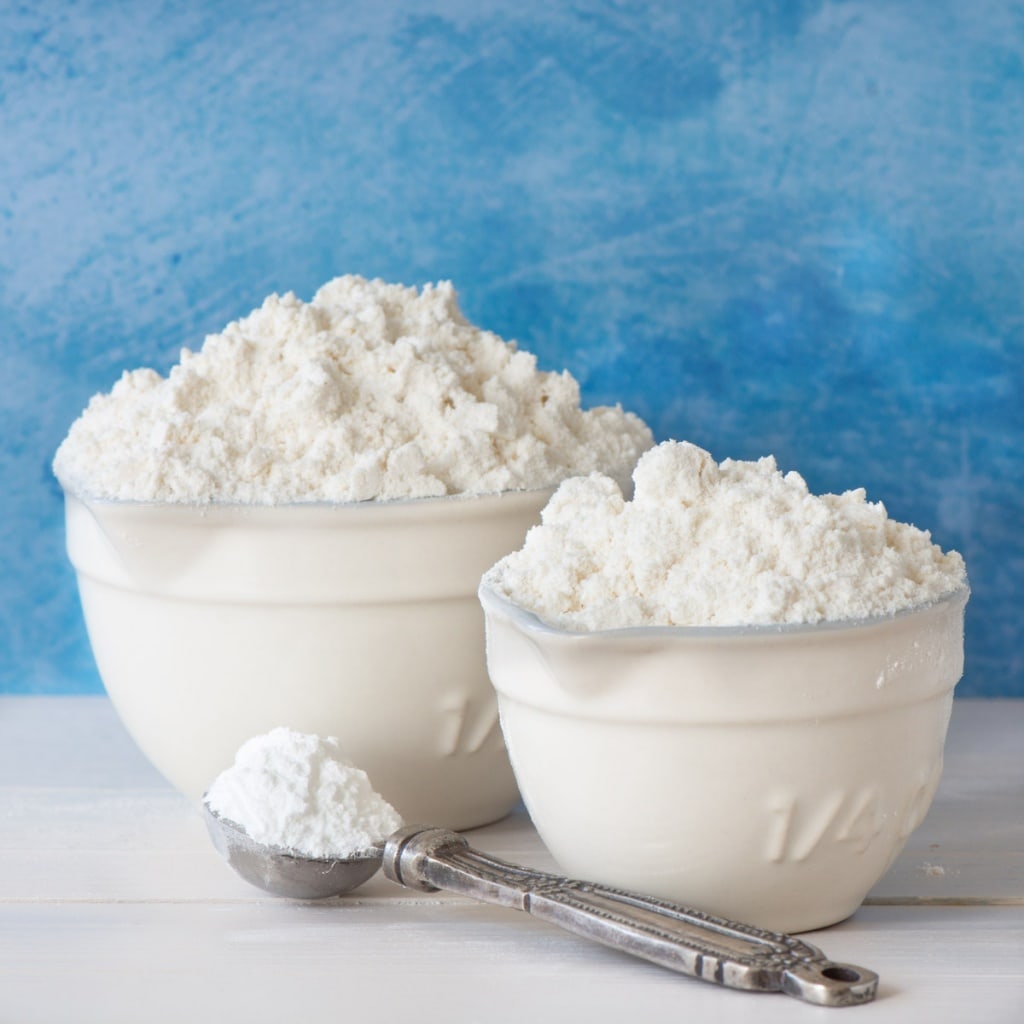
Is self-raising flour in the UK the same as self-rising flour in the US?
Unfortunately not, so if you find a recipe that calls for one of these and you’re not in the right country then I’d suggest using a homemade version.
The version I’ve shared here is for UK self-raising flour (as that’s what I use and what I can get hold of in the shops for my testing). US self-rising flour has a lower amount of baking powder and also contains added salt.
FREE GRAMS TO CUPS CONVERSION CHARTS
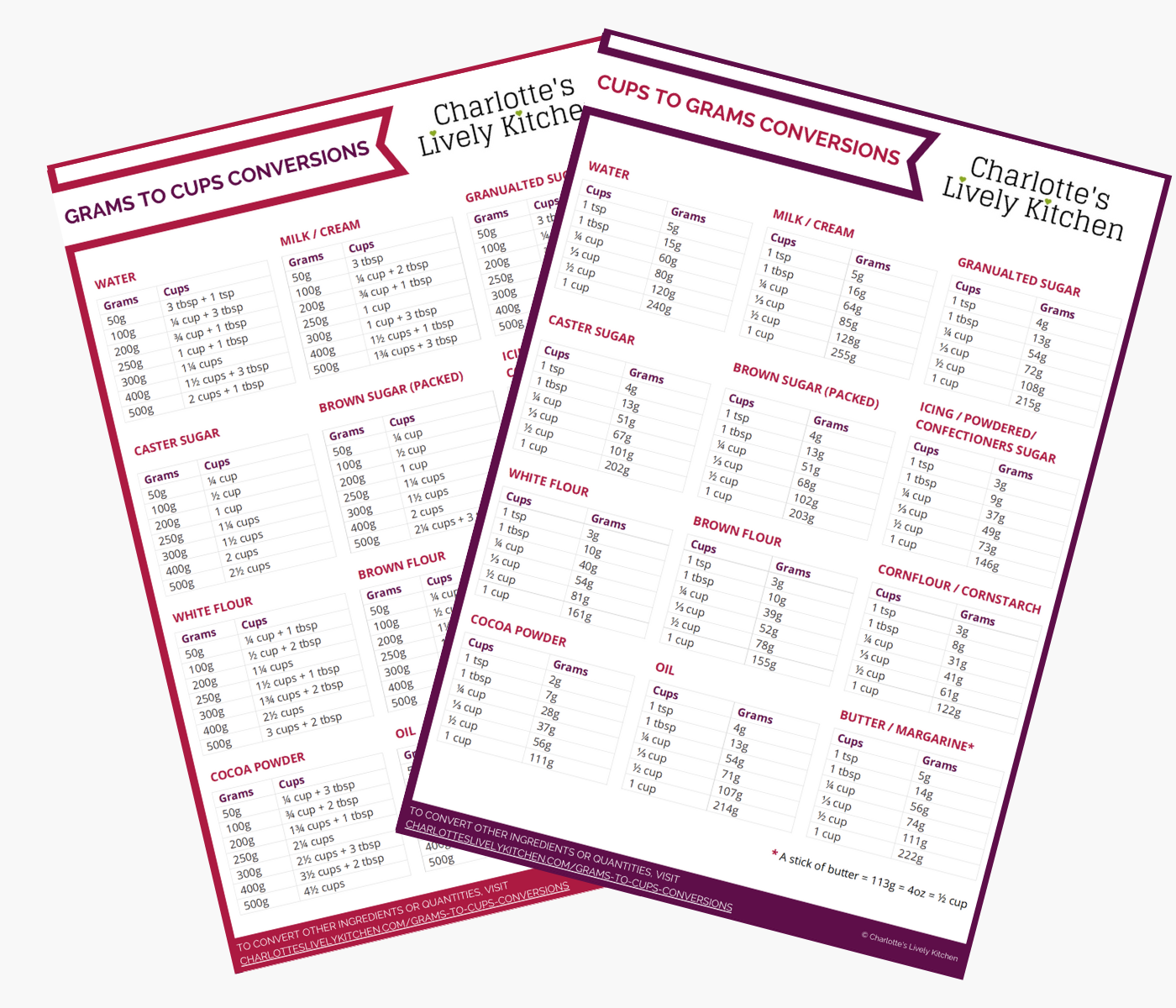
Subscribe to the Charlotte’s Lively Kitchen mailing list to get your FREE printable grams to cups and cups to grams conversion charts for twelve popular baking ingredients
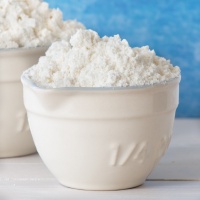
How To Make Self-Raising Flour
INGREDIENTS
- 100 g plain or all-purpose flour
- 1 level tsp baking powder - I always use a measuring teaspoon rather than one I'd use to make a cup of tea as it's much more accurate.
INSTRUCTIONS
- Put your ingredients (100g plain flour, 1 tsp baking powder) into a large bowl.
- Mix together (I like to use a whisk) until the baking powder is evenly distributed in the flour.
- Your self-raising flour is now ready to use in your chosen recipe.
NOTES
NUTRITIONAL INFORMATION
Any nutritional information provided is the estimated nutritional information per serving. Please refer to my guide to Charlotte’s Lively Kitchen nutritional information if you would like to learn more about how this is calculated.


Heather says
Does the same apply if using gluten free plain flour do you know?
Charlotte Oates says
I would expect so but gluten-free flour can often react to other ingredients in a recipe differently to regular wheat flour so I wouldn’t be able to confidently say yes. If you are willing to experiment, I would think that this is a good starting point.
Mary Tunison says
Just to clarify. Do I add a pinch of salt also w 100g flour 1 tsp baking powder ? In US
Charlotte Oates says
If you are trying to make American Self-Rising flour then this may be a good idea. I am unable to buy that flour here in the UK so I’m unable to test quantities.
Julie K. says
So helpful, thank you. I recently purchased “The Hebridean Baker” cookbook and need self-raising flour for the courgette scones recipe. Thanks for explaining the difference between UK/US versions.
B says
Very helpful and informative!
Sarah says
Thank you for finally just solving this issue. Seeing all those wildly varying suggestions online is so frustrating. Now I can finally just starting making scones.
Artem says
Amazing, thank you for putting in the work and sharing this!
Joe Thompson says
Why don’t you put the TSP in grams?
There’s at least 5 different teaspoon measures. And heaped instead of level? Guess?
Charlotte Oates says
A teaspoon is a standard measure which is 5mls. A teaspoon in a recipe doesn’t refer to any old small spoon in your cutlery drawer. All standard spoon measures are levelled not heaped as this would be highly inaccurate.
AJ says
Many recipes for self-rising flour include salt. I didn’t see salt indicated. Is it typical in the UK for self-rising flour to include salt or is that an American adaptation? Thank you so much! I appreciate the directions that were based on weight, instead of volume.
Charlotte Oates says
Self-raising flour does not contain added salt in the UK.
Maureen says
Hi Charlotte, thanks for sharing this information with everyone. Could I please ask, you mentioned you add additional baking powder to your self raising flour, how much do you add ? For example when making cakes I use 2 cups self raising flour 250g measuring cup in Australia, how much additional baking powder should I use please ? Thank you so much
Regards
Maureen
Charlotte Oates says
To make SR flour I add 1 tsp baking powder for every 100g plain flour. My Easy Vanilla Cupcakes recipe used 165g SR flour and 1.5 extra tsp of baking powder. I am therefore doubling the overall amount of raising agent in the flour. Cups are volume measures and not measures by weight – 1 metric cup is equal to 250ml. Using my Grams to Cups / Cups to Grams Conversions Calculator I can work out that a 250ml metric cup holds 167g sr flour. I would therefore be adding around 1.5 tsp of baking powder for every 2 metric cups of sr flour to make my cupcakes. The final result will always depend on the actual recipe so I couldn’t guarantee that you could get the perfect rise this way unless you were using my tested vanilla cupcake recipe.
Mr K McNaughton says
A professional baker told me that one should use 4% by weight of flour . BUT remove The same quantity of plain flour viz.100g of plain flour x 4% =4 grams of baking powder. Therefore you must remove 4 grams of plain flour to get 100 grams of self raising flour! In an old Imperial recipe, I weigh the ounces etc. I then press the metric button on my scale and get the weight in grams. Works every time. Thanks to retired baker, Richard, who lives next door!! Also, always weigh everything, even liquids. They do in Italy. (My mother was Italian)
jill says
Extremely helpful post! Thank-you.
Richard says
Thank you, Charlotte! I had been googling how to make self raising flour and hitting all those inconsistent suggestions that you found, and then I came across this post. Science rather than opinion: that’s what we need!
Krystyna says
Merci Charlotte.
Thanks to your tip, I discovered I was not using enough levure chimique (french for baking powder) when I made muffins.
Our little sachets are 11 gm, and I added a full one to 300 gm plain flour.
Today’s muffins were perfect, with a good height, fluffy inside, and a little crunchy on the top.
Thank you so much for your recipe.
A Grant says
That’s very helpful as I’ve just run out of self-raising flour, and need to use plain. Thanks
Terry McDonald says
NEVER a level teaspoon of baking powder. Always a rounded teaspoon. That’s why baking powder containers do not come with a lid/cover to level the teaspoon!
Charlotte Oates says
Accuracy is key when using measuring implements. Whether you are using measuring cups or measuring spoons, the bowl of that measure is the only accurate measure. In this case a tsp is 5ml in volume. Using “rounded” or “heaped” spoons provides zero accuracy. One person’s “rounded” spoon could contain 8ml by volume or 10ml or 12 ml. There is no way of knowing or keeping consistency. This variation can change a recipe quite drastically, especially as the quantities increase. So level spoons should always be used. If your container (which are different from store to store, brand to brand and country to country) doesn’t provide an easy way to level the spoon, a knife should be used.
Kay Dissle says
What is the weight in grams of 1 tsp baking powder. I don’t have the measuring tsp and use an electronic scale to weight my ingredients as I add them to my mixing bowl. .
Charlotte Oates says
1 tsp of baking powder weighs around 4g.
Amanda says
This argument doesn’t make sense. Bags of flour and sugar do not come with a lid or cover to level the measurements, but if you used heaping cups of those, your baking would come out so wrong.
Zia says
Hey
This is so helpful , so if a recipe asks for 340gm of Self raising then how much baking powder would I be adding ? 3.5 teaspoons? (U.K. based here so using the metric system ) do tell thanks I’m advance
Charlotte Oates says
Technically you would need to use 3.4 tsp of baking powder for 340g plain flour but 3.5tsp would likely work and be easiest as the difference is so small.